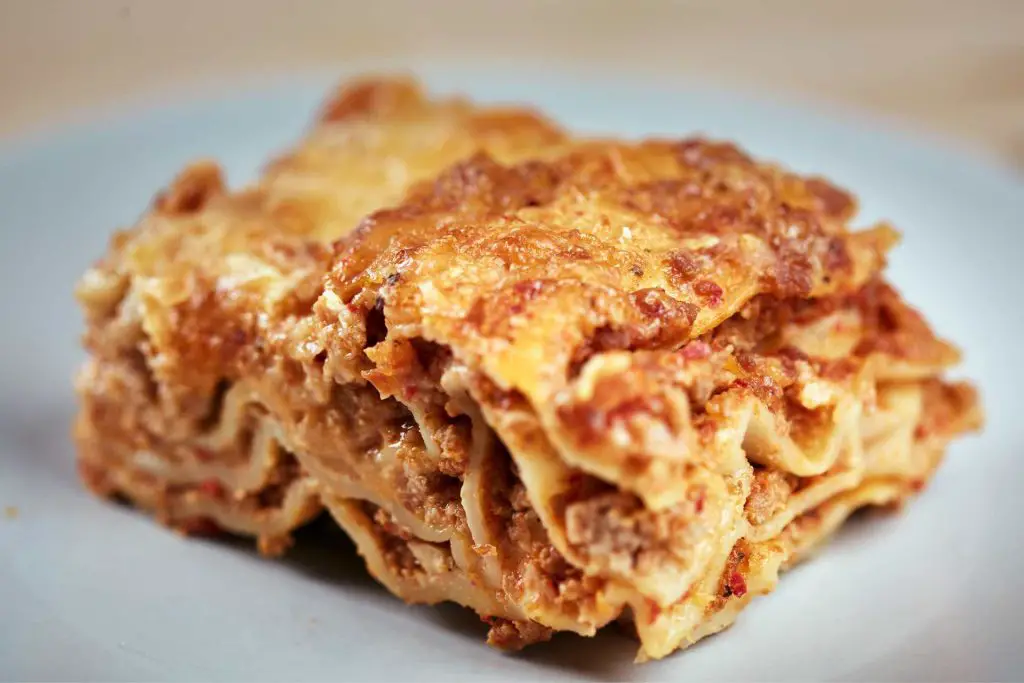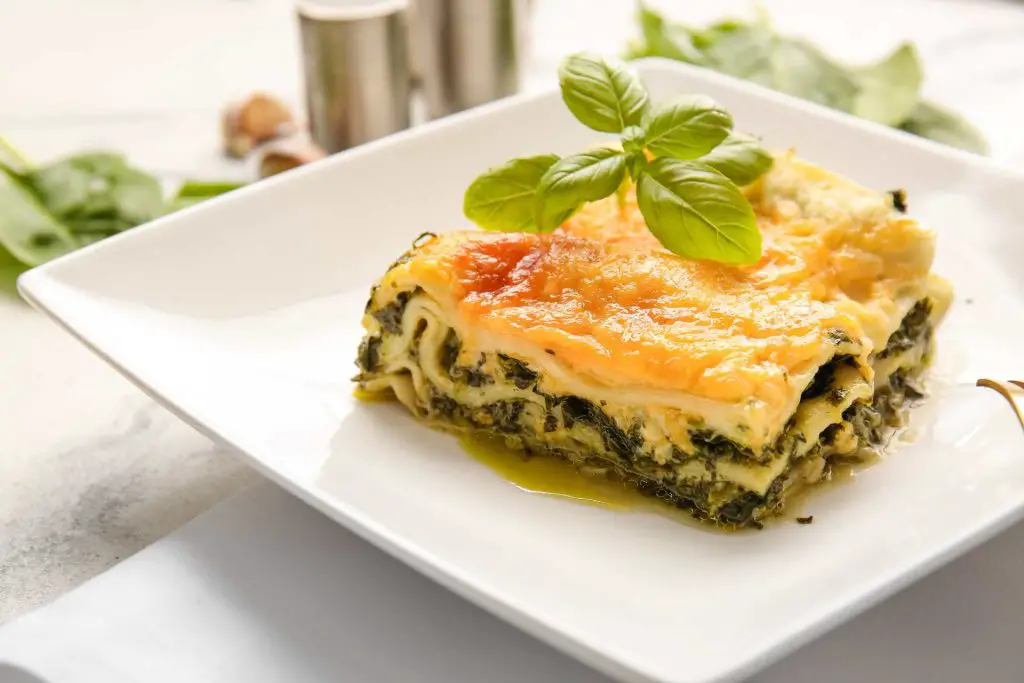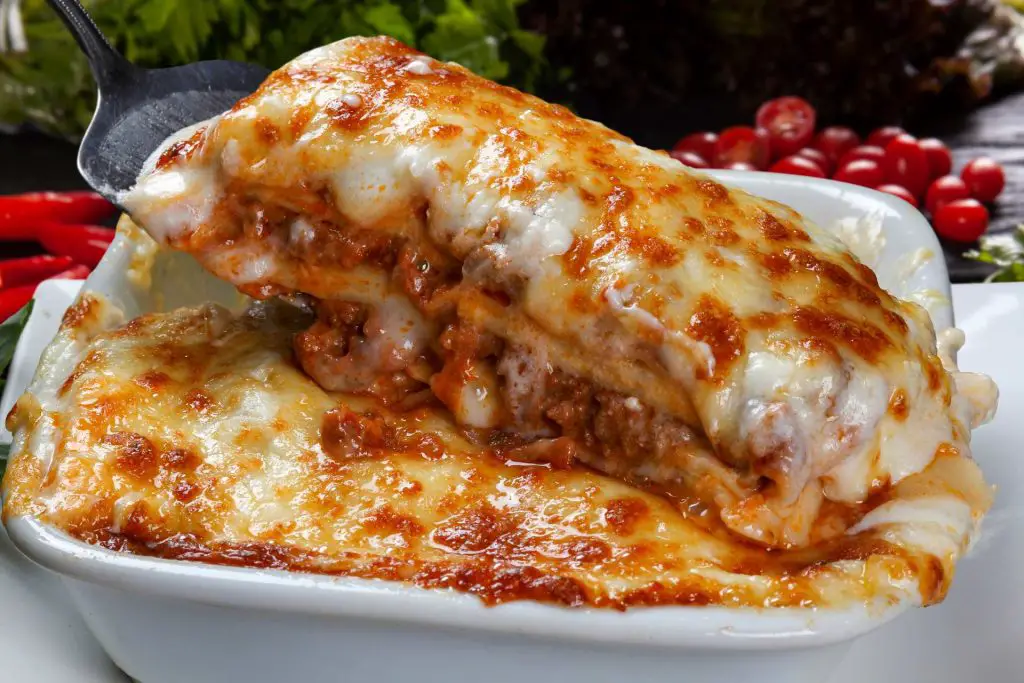Lasagna is one of the most beloved and iconic pasta dishes in Italian cuisine. With its layers of flat noodles alternating with rich ragù, creamy béchamel sauce, and melted cheese, it’s a soul-satisfying culinary masterpiece. While lasagna is enjoyed around the world today, its origins are deeply rooted in Italian history and culture going back centuries. Let’s explore the fascinating journey of how this iconic dish evolved into the comforting meal we know and love.
“Is there anything that ‘today I made lasagna’ can’t solve”?
Fabrizio Caramagna
The heritage of Lasagna through time
Synonymous with family lunches, festive celebrations, and leisurely Sundays, lasagna stands as a quintessential emblem of Italian culture, skillfully weaving together a rich historical arras with an overabundance of regional adaptations.

Italian Lasagna: pasta’s ancient beginnings
To trace lasagna’s backstory, we must first look at the history of pasta itself. Though often associated with Italian cuisine, pasta’s origins can be traced back to ancient Greece, where basic hand-rolled noodle dishes were made from wheat flour and water. When Romans encountered these early pastas during their conquest of Greece around 200 BC, they grew enamored of the simple yet satisfying dishes.
They carried noodle-making techniques with them throughout their expanding empire, including to the Italian peninsula. In ancient Rome, common folk ate a rudimentary pasta made from scratch, while more wealthy Romans relished delicacies like a dough layer dish that resembled early. This luxurious pasta al-forno (baked pasta dish) was made with alternating layers of long, thin noodle sheets and a rich meat sauce or ragù. So, the concept of this was familiar to the Romans, transcending the confines of Bologna and Naples. Through the terms “laganon” and “laganum,” they described a flatbread made from wheat flour dough, baked in an oven or over an open flame.
The gastronome Apicius notably mentioned a “lagana” comprising thin pasta sheets filled with meat, baked together but bearing little resemblance to the modern lasagna—essentially a haphazard mix of pasta and meat. This early incarnation of layered pasta became particularly popular in the Campania region around Naples. It set the culinary stage for the beloved lasagna to emerge centuries later during the Middle Ages and Renaissance eras.
Medieval Poetic Muses
The medieval era saw lasagna gain widespread popularity, finding its way into the verses of poets across regions. In Umbria, Jacopone da Todi highlighted its superiority over peppercorns, while Tuscany’s Cecco Angiolieri humorously remarked on the consequences of borrowing flour for lasagna. Brother Salimbene from Parma vividly described a monk’s indulgence in cheese-laden lasagna. The Renaissance brought egg pasta to Northern Italy, laying the groundwork for Emilia’s lasagna, distinguished by alternating layers of pasta and cheese, evolving into today’s version with the introduction of tomato sauce from Naples.
Italian pasta: evolving in Renaissance
As early pasta dishes evolved over the centuries, lasagna started taking more recognizable form throughout various regions of Italy during the Renaissance period in the 15th and 16th centuries. In Naples, cooks began assembling layers of thin flat noodles alternated with aged ricotta cheese and ground pork or meatballs in a tomato sauce. The dish was called lasagne from the Italian word lasana, meaning “cooking pot.” Meanwhile, in the Emilia-Romagna region of northern Italy, the Renaissance-era lasagne verdi al forno featured spinach-infused pasta sheets layered with ragù, béchamel sauce, and Parmigiano-Reggiano cheese before being baked to bubbling perfection. Around Bologna, the rich egg-based pasta dough was hand-rolled into delicate wide strips. In Tuscany, cooks included béchamel and Italian sausage or beef ragù between wide flat noodles sprinkled with Parmigiano-Reggiano. Though regional variations emerged, one common thread united these early lasagna dishes—the savory satisfaction of layering flat noodles with flavorful meat sauces and creamy cheeses or béchamel before baking it to melted perfection.

New World tomato influences
Lasagna’s evolution took an especially flavorful turn after the Spanish colonization of the Americas in the 16th century. Tomatoes, which originated in Peru, Mexico and Ecuador, were brought back to Europe and swiftly integrated into Italian cuisine. Cooks across Italy seized on the opportunity to add tomatoes to their long-simmered meat ragouts or tomato-based sauces layered between pasta sheets. Tomato-based sauces not only amped up lasagna’s fresh flavors, but their natural acids complemented cheeses while helping tenderize tough, inexpensive cuts of meat used in ragù.
Regional specialties today
As Italian families immigrated to America over generations, they packed their cherished lasagna recipes from the old country. But lasagna’s evolution didn’t stop once it reached American shores. New ingredients and cooking techniques continued shaping this classic dish’s development.
Today in Italy, cooks across the peninsula’s 20 regions proudly claim their own distinct spins on lasagna as integral parts of their local cuisine and cultural heritage. In the northern region of Emilia-Romagna, lasagne verdi remains a beloved specialty featuring spinach-infused pasta sheets layered with Bolognese ragù, béchamel and Parmigiano-Reggiano. The bright green noodle sheets get their vibrant hue from iron-rich spinach puree mixed into the dough.
The capital city of Bologna is especially particular about its decadent green lasagne, which is only made during winter festivals and holiday celebrations due to its labor-intensive preparation. Under Italy’s rigid food regulations, Bolognese lasagne verdi must contain a minimum of 3% spinaci verde (spinach puree) in the dough to bear the prestigious Denominazione di Origine Protetta (DOP) seal. Southern regions like Naples, Campania and Sicily offer their own cherished versions merrily loaded with tomato sauce, ground pork or beef, ricotta or other cheeses.
In Naples, cooks make lasagna di Carnevale only during the Christmas and Carnevale season using sourdough bread crumbs fried in lard as a crunchy topping.
Meanwhile, the food-obsessed citizens of Genoa endlessly debate whether their signature lasagna Genovese should be made with meat ragù or a meat-free version using mushrooms, béchamel and parmesan. The Italian Academy of Cuisine’s official recognition of green Bolognese lasagna underscores the dish’s regional diversity. In contrast, Neapolitan lasagna is known for its carnival tradition, incorporating ricotta, meatballs, and a unique blend of cheeses. Across Italy, regional variations abound, from Liguria’s pesto to Veneto’s red radicchio and Umbria’s vincisgrassi with enriched ragù. Lasagna’s adaptability is further showcased in versions featuring porcini mushrooms, truffles, and even aubergines in Sicily’s “alla Norma” rendition, illustrating the dish’s enduring appeal and versatility across Italy.

Italian Lasagna: modern twists
Despite staunch regional pride, cooks in Italy and abroad continue putting innovative twists on lasagna to suit evolving tastes and dietary trends. Healthier vegetable-based versions replace meat with everything from mushrooms and eggplant to sautéed spinach and zucchini.
Gluten-free uses chickpea or lentil-flour noodles for those avoiding wheat.
Even vegan lasagna has emerged, swapping out eggs and dairy products for plant-based alternatives like cashew milk for béchamel or dairy-free meat substitutes. With its combination of protein, veggies and cheesy goodness all baked together in one hearty, comforting dish, it’s no wonder lasagna has remained such an enduring favorite—from its ancient Greek and Roman roots to its delicious renaissance across countless regional reinventions in Italy and beyond. Despite its global popularity and modern interpretations, lasagna remains an iconic homage to the rustic genius and tradition-steeped wisdom of Italian cucina povera—the simple act of transforming humble, affordable ingredients into something transcendently delicious and deeply nourishing for the soul.
Lasagna’s enduring controversy: Bologna versus Naples
The journey from an ancient Roman creation to the contemporary layered delight has ignited a passionate debate over its origins between Bologna and Naples. Despite their recipes featuring significant variations, such as the inclusion of béchamel in one and ricotta in the other, each region proudly boasts its unique interpretation of lasagna.

A Culinary Duel
The clash between Emilian and Neapolitan lasagna traditions is emblematic of their rich culinary heritage. While the first recorded recipe for tomato-based lasagna dates to 1881, its roots are deeply entwined with Neapolitan cuisine, dating back to the early 14th century. Neapolitan innovations introduced lasagna with layered cheese and spices, evolving to include dairy products and oven-baking by the 17th century. Ferdinand II of the Bourbon dynasty was notably fond of this dish, earning him the nickname “lasagna king.”
The unification’s culinary impact
Post-Italy’s unification, it was possibly Naples’ influence that revitalized lasagna’s popularity, a dish once overlooked by Pellegrino Artusi. However, Bolognese restaurateurs later codified the recipe in the early 20th century, solidifying its national prominence.
The Bottom line
Lasagna’s journey from ancient Roman roots to a beloved global dish is a testament to the enduring allure of Italian cuisine. What began as a humble layered pasta bake has been lovingly adapted and elevated across Italy’s diverse regions over centuries. The delicious clash between Bologna’s refined lasagne al forno with béchamel and Naples’ rustic lasagna di Carnevale showcases the passion and pride Italians have for their local culinary traditions.
Yet lasagna’s genius lies in its ability to transcend geographic boundaries and cultural divides. As Italian immigrants brought treasured family recipes to America and beyond, lasagna became a universal symbol of comfort food at its finest. Today’s innovations like gluten-free, vegetarian and vegan lasagna versions underscore this iconic dish’s remarkable flexibility to suit changing tastes and dietary needs across the world.
Though regional rivalries over the “authentic” lasagna recipe will likely persist, that spirited debate is part of what makes this dish so quintessentially Italian. Lasagna’s rich history intertwines inextricably with Italy’s beloved culinary heritage—a story of transforming simple, wholesome ingredients through generations of kitchen wisdom and creativity into an edible masterpiece to savor and share. No matter which version graces your table, lasagna will always satisfy the soul as well as the belly.


